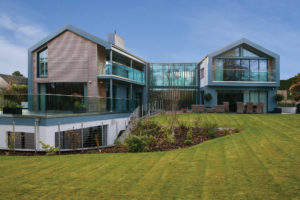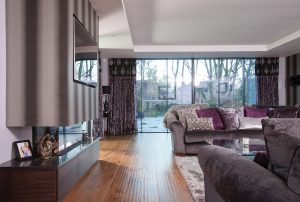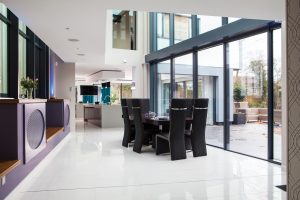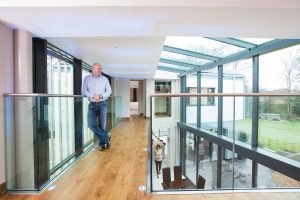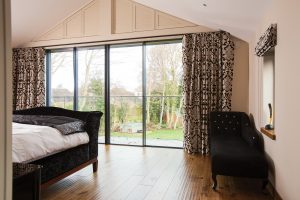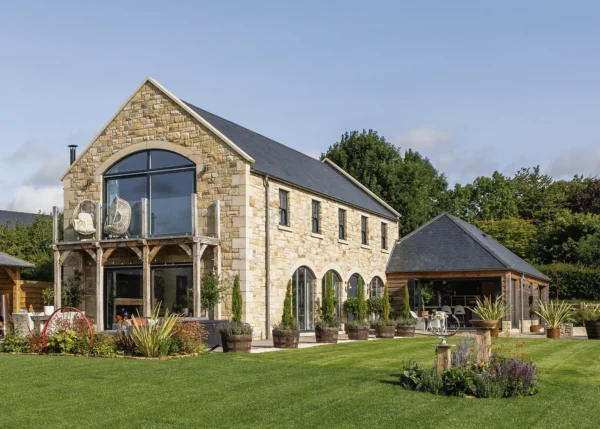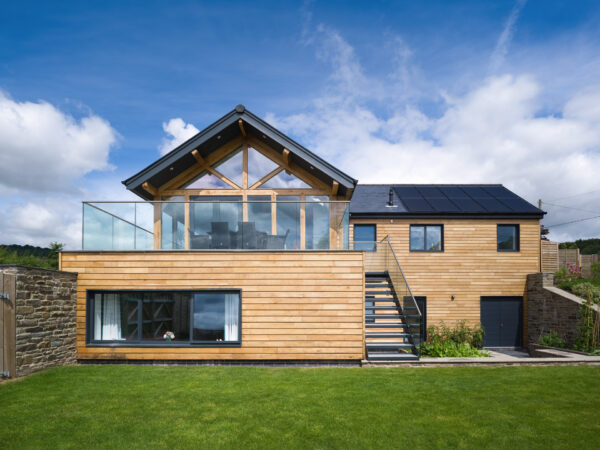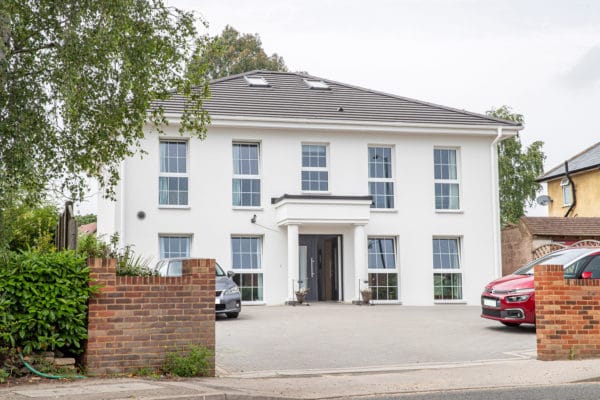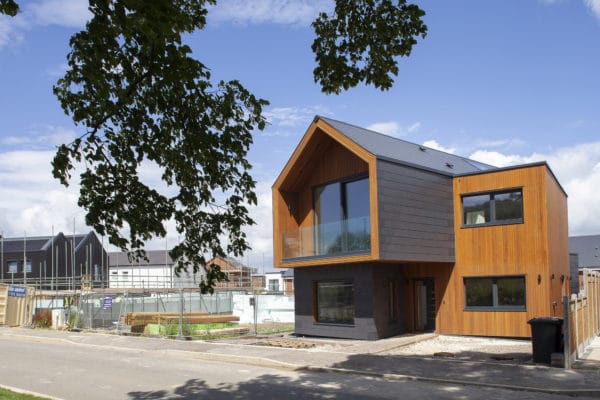Bold & Beautiful Contemporary Home
Large garden plots in the middle of leafy suburbs are like gold-dust in the popular spa town of Harrogate. Tori and Graham Watson, however, struck gold when they got the chance to buy a bungalow in a large, wooded garden – right next door to their existing property.
“We had been interested in the idea of building our own home for several years but we love where we live and we have great neighbours, so we didn’t really want to move away,” says Tori.
“When one of those neighbours sadly died, nobody wanted to see three or four houses crammed onto the site by a developer. So before it even came onto the open market, we bought it with the aim of knocking down the dormer bungalow and replacing it with a single family home for us and our daughters – albeit a much larger one.”
Their plan was to create a contemporary house based around two wings of living accommodation, joined by a two-storey glass link. “We did a lot of research beforehand, visiting self-build shows and reading all the magazines,” says Tori.
- NameTori & Graham Watson
- LocationNorth Yorkshire
- ProjectSelf-build
- StyleContemporary
- Construction methodInsulating concrete formwork (ICF), steelwork, structural glazing and a structural insulated panel (SIPs) roof
- Plot cost£495,000
- House size808m²
- Build cost£1,900,000
- Total cost£2,395,000
- Build cost per m² £2,351
- Construction time18 months
“We knew we wanted light, open spaces and a modern, streamlined look. To take things further, the couple employed Ilkley-based architects Sense of Space to design the house and then project manage the build.
The plot already had consent for a replacement scheme, but securing planning permission for the Watsons’ revised design for a luxury dwelling – which includes a swimming pool and cinema room in the basement – took eight months. Tweaks were made to the size of the house and its position on the plot, partly to maximise views from each storey and emphasise the close links with the garden.
Digging deep
By Christmas 2011, the concrete slab had been laid and the ground-floor layout was starting to emerge. At this point the footprint looked huge and the sloping garden had been excavated and backfilled to accommodate the lower ground floor swimming pool and cinema area.
This gave rise to one of the main challenges of the build. Sense of Space had designed the pool room in such a way that tanking (applying a waterproof seal) was not considered necessary, but the contractor was adamant that this part of the build should be literally watertight and that the entire below-ground structure should be tanked – adding an unexpected cost to the project.
Making a connection
The Watsons were lucky to have a large plot, which meant that materials could be delivered directly onto the site without vehicles having to park up on the public road. Nevertheless, the couple were acutely aware that the upheaval could still have an impact on others living in the suburban cul-de-sac. “We kept everyone informed of what to expect during the build – such as when delivery lorries would be coming and going – and I think that helped win their support throughout the process,” says Tori.
The couple’s old house – just two doors away – sold within a month of going on the market, so the family moved into a cabin in a local country park for the duration of the build.
Mixed construction methods
The basic shell of the house is made from insulating concrete formwork (ICF) and steelwork provides reinforcement throughout the building. Once the project moved past foundation level, the walls shot up. The roof, which is made of structural insulated panels (SIPs), was up by June 2012 – an impressive achievement for a project of this scale. Because there were no trusses to get in the way, Sense of Space employed the panels to create spectacular, capacious vaulted living zones.
The two wings of the house were built as separate structures, with the link going in last. “We just had a hoarding spanning the two sections until the storey-height windows – which were triple glazed and argon-filled – arrived and were slotted into place to create the connection,” says Graham.
“Before the windows went in, the concrete openings were cleaned off and measured so the glass panels could be prefabricated off-site to the exact dimensions. It was treated like a commercial build because of the scale. There were often as many as 30 people on site in one day.”
Bridging the gap
Tori and Graham claim the construction phase itself was not in the least bit stressful – especially compared with the hassles of selling their security business, which they say was vital to funding the final stages of the project.
One unexpected expense was the cost of installing a three-phase electrical system. The large property needed a commercial-scale connection, which in the end led to the whole street being upgraded. The Watsons paid £26,000 for linking into the supply.
With the main structure up and watertight, Tori stepped up her involvement to research and select the floor coverings, kitchen, bathroom fittings, lighting and furniture. The sale of their business provided the funds to buy exactly what they wanted, without compromise, which shows in every part of the high-spec finish.
Living the dream
The one low point came when Graham returned home from a trip to South Africa to find the ground floor in chaos. Some of the contractors were attacking a wall with heavy duty tools to try to get a door to fit – but Graham stepped in and within weeks things came together.
By January things had progressed significantly: the kitchen units were in, the balustrades had been fitted and all the decorative finishes were completed. Spring that year brought the high point, when the family returned from a break to find that the landscapers had finished their work and the garden was ready to enjoy – and to top it all, their new home had made it onto the shortlist of finalists for the Northern Design Awards.
“It was amazing,” says Graham. “After such a long build and living among the chaos for the final few months, it was brilliant to turn into the drive and see it all finished. To find out it had been recognised for its great design was the icing on the cake. We had a big barbecue with the neighbours to celebrate.”
The project has lived up to the couple’s expectations and they wouldn’t change a thing. “We built this as our forever house,” says Tori. “We’d be happy to tackle another project, but we wouldn’t want to move away. Everything we could possibly want is right here.”
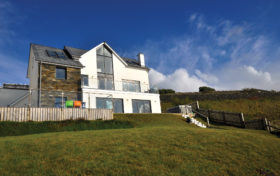
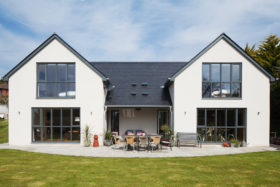

















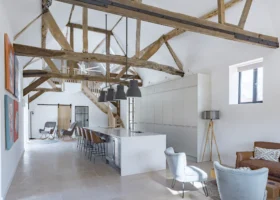















































































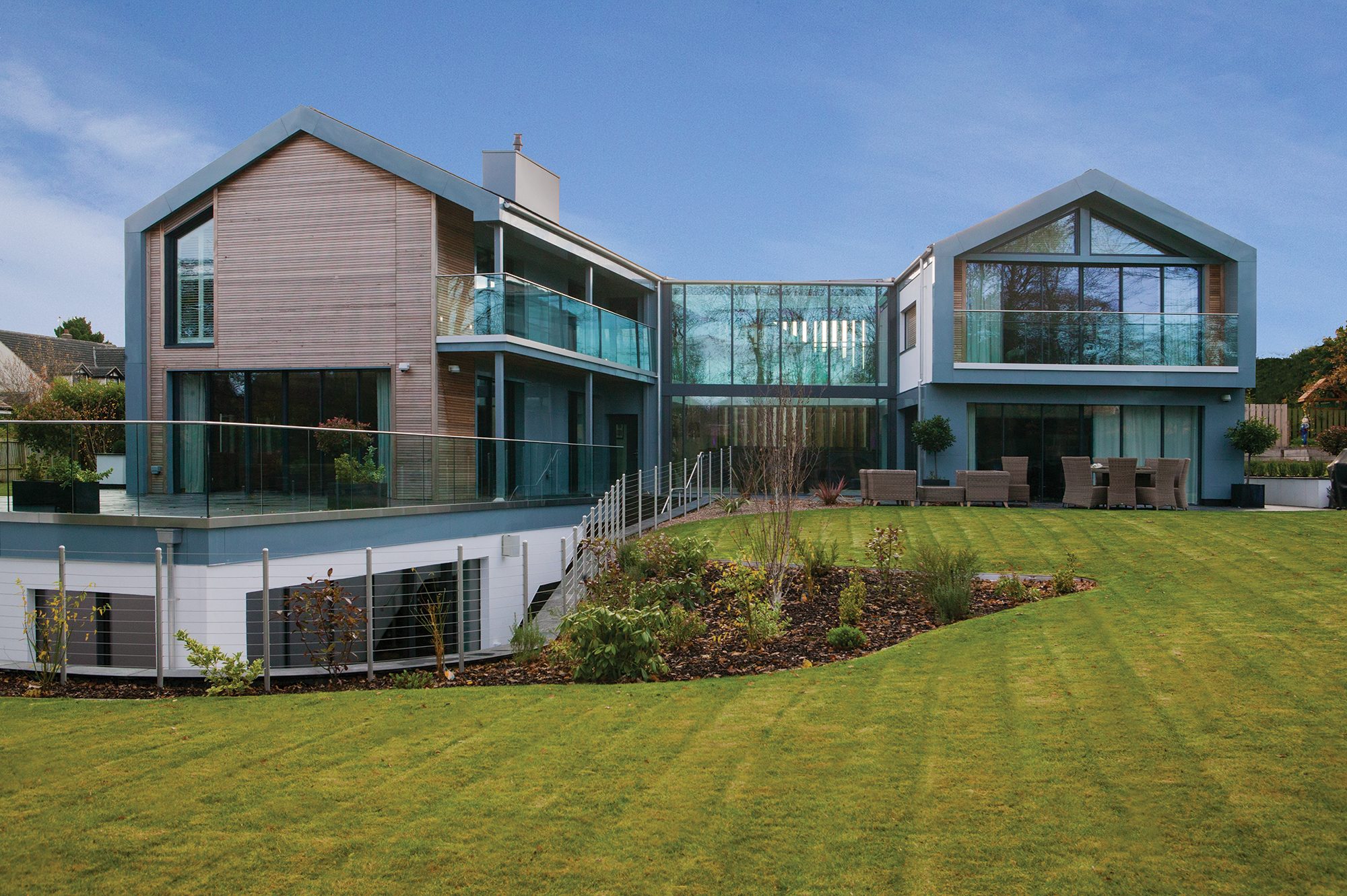
 Login/register to save Article for later
Login/register to save Article for later

